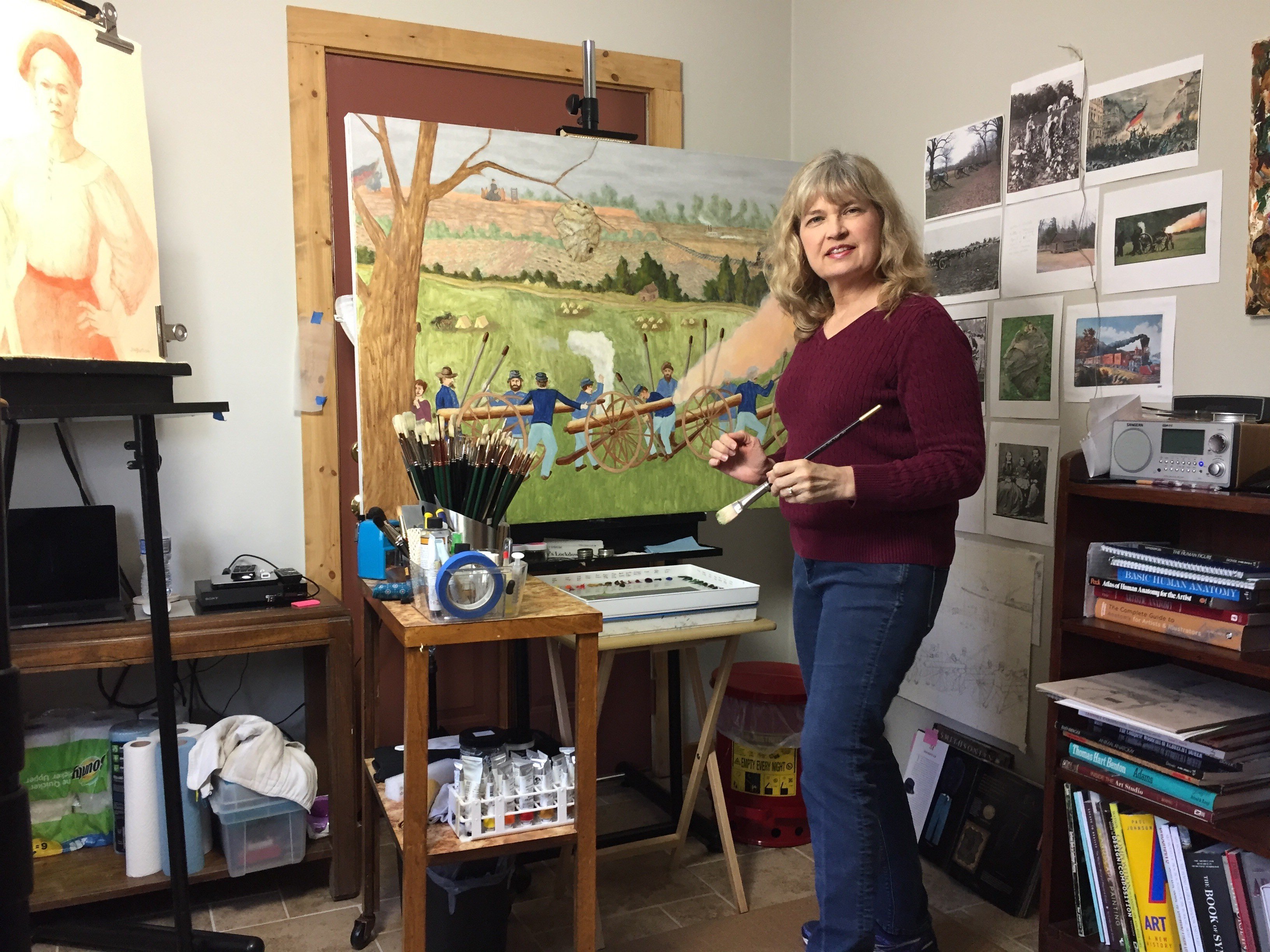
As much of the world entered lockdown, the New York Academy of Art, too, closed its studios and locked its doors, beginning on March 22. But social distancing hasn’t stopped the school from holding weekly critiques for its MFA students—and it’s bringing in a host of high-powered artists, critics, and dealers to assist.
So far, students have had one-on-one Zoom meetings with artists Eric Fischl and Tschabalala Self, both academy faculty members, and painter Natalie Frank. Coming up soon on the schedule are artists John Currin, Mickalene Thomas, and Rachel Feinstein; Jeffrey Deitch dealer Alia Williams, critic Jillian Steinhauer, and curator Yvonne Force Villareal.
“We have tons of asks out to various artists, curators, gallerists, and critics, and the list is updating constantly,” Angharad Coates, the academy’s director of communications, told Artnet News in an email.
“The biggest advantage is that we are now not limited by geography. Normally someone has to be physically present in New York to visit studios or to give a talk—nor by timing. Normally, to give a crit, you have to be free for three to four hours on a Wednesday afternoon, which is a big commitment,” Coates added. “Now, we can ask people who are anywhere on earth, and most people have lots of available free time.”
“We had our director of operations driving around the city and delivering art materials like sculpture clay to students’ individual apartments,” Coates said. “We are fully committed to making sure that students can continue to create work at home, even under the circumstances.”
A New York Academy of Art Zoom critique with student Natalie Terenzini, provost Peter Drake, student Austin Harris, professor Wade Schuman, and student Tedo Rekhviashvili, featuring a painting of Schuman giving a Zoom critique. Photo courtesy of the New York Academy of Art.
Although the semester has been dramatically disrupted, the school is nonetheless doing its best to maintain a sense of normalcy and to provide students with a well-rounded studio art education.
Recreating the in-person experience of the critique at home is a challenge. A visiting critic can’t just walk in and survey the studio, seeing what catches their eye. Instead, students provide JPGs of their work beforehand. Each visiting critic meets one-on-one with 10 students for about 20 minutes each.
“I was curious about how it would work,” painter and visiting critic Natalie Frank told Artnet News. “It was strangely intimate actually, for not being in person—maybe because you could see them in their home environment.”
For some students, the distant aspect of a Zoom meeting has been a positive experience. “With the in-person dynamic removed I was less intimidated and therefore could remove myself and be more objective about my work and the conversation,” said first-year student Dena Sturm in an email to Artnet News.
Critic Andrew Russeth at a New York Academy of Art critique in normal times. Photo by Angharad Coates, courtesy of the New York Academy of Art.
Zoom has its drawbacks too, of course. There are poor internet connections, leading to cut off sentences and lost video feeds. And nothing can compare to seeing a work in person.
“It’s hard to see the materiality of the surfaces, especially in thicker, more expressionistic painting,” Frank said, “but in broader strokes you could have a pretty informative and meaningful conversation.”
New York Academy of Art student Dena Sturm doing classwork over Zoom. Photo courtesy of the artist.
Ultimately, the academy recognizes that a studio education needs to happen, well, in the studio, so it is extending the semester, which normally ends in May, into the summer.
So long as federal and state directives permit, the school will reopen its studios in June. The plan is to hold final thesis critiques in person from June 30 to July 2, and to stage the traditional thesis exhibition afterward, making the in-person show available online as well.
In the meantime, the weekly critique sessions are helping tide students over as they work from makeshift home studios.
“It’s a brave new world,” Coates said. “But we’ve been thrilled at how adaptable everyone has been, both faculty and students.”